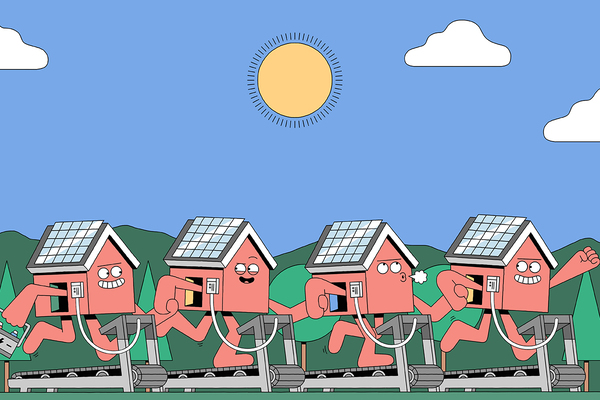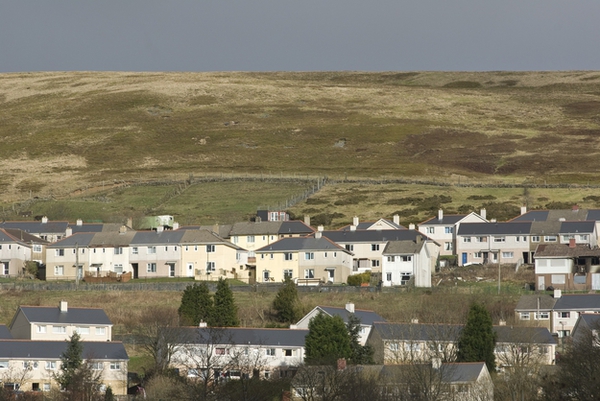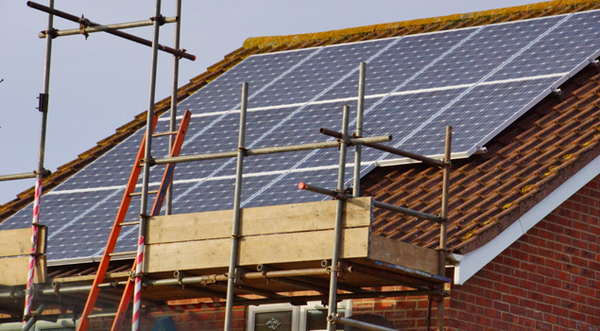You are viewing 1 of your 1 free articles

Homes as power stations
Welsh housing association Pobl is planning to build ‘Active Homes’ – properties that actually generate energy. Darrell Bolton explains more.

I guess I’m not telling you anything you don’t already know when I say there’s an energy crisis.
At a national level, the UK is set to miss its EU targets on adoption of renewable energy by up to nine years according to the National Grid.
At a local level, the Welsh Government says 23% of households in Wales are already experiencing fuel poverty: spending 10% or more of their total income on energy costs.
So, what if there was a way that we, as builders and providers of homes, could help address this crisis from both ends of the energy spectrum?
What if we could play a part in the supply of clean, renewable energy and at the same time help control or reduce the cost of that energy for the people living in our homes?
On 8 August, Pobl received planning permission for a new development of 16 Active Homes in Neath in partnership with Neath Port Talbot Council and Swansea University’s Innovation and Knowledge Centre.
It’s a flagship scheme within the Homes as Power Stations project in the Swansea Bay City Region deal: a £1.3bn investment into the region signed by the UK government in March.
When the homes are finished in spring 2019, it will be the first major housing scheme to use Specific’s Active Home concept – buildings that generate, store and then release their own energy.
The concept is already operating successfully on an academic building in Swansea. In September 2016, Specific built an Active Classroom on Swansea University’s Bay Campus – the UK’s first energy-positive classroom. Over six months of operation and monitoring it has generated more energy than it has used. Our Active Homes in Neath have much in common with the classroom, albeit with adjustments for the difference in intended use.
“The combination of technology could see energy consumption reduced by as much as 60%.”
They will have lightweight, laminated solar roofs feeding shared battery storage. Water heating will be by solar heat collectors on south-facing walls while waste heat will be captured and recycled to heat the building, topped up by a heat pump where necessary.
Families could even charge their electric cars from the power generated by their homes. The modelling suggests the combination of technology could see energy consumption reduced by as much as 60% for people living in the homes, saving tenants around £600 per year on their bills.
The development has been designed under a standard house type design which means it can be replicated at scale and this is where we turn to the broader end of the energy spectrum and the issue of supply.
The same modelling undertaken for Active Homes suggests that, at scale, this could have huge impacts at a national level including:
- Reducing peak central power generating capacity by 3,000 megawatts, equivalent to a very large power station
- Reducing carbon dioxide emissions by nearly 80 million tonnes over 40 years
- Creating UK investment and jobs
Of course, a new concept like this is not without its own challenges and considerations. For example, the siting of a battery store, in a location that minimises the power loss between energy production and storage, is key and it has to blend in with the environment we are trying to create.
Inevitably, the cost of building these homes is more expensive than our normal homes, which is not unusual for this sort of pilot project. We will monitor this and report on the outturn costs as part of the review when the homes are occupied. Building at scale is expected to bring costs more in line with our traditional building methods.” the lack of scale at this stage and the pilot nature of the project has an impact.
“The cost of building these homes is more expensive than our normal homes.”
However, with the support of our partners we are looking forward to bringing the concept to life and testing how these new homes perform in practice.
The project will be fully monitored and evaluated as part of the Department for Business, Energy & Industrial Strategy’s ‘Learning From Low-Cost, Low-Carbon Homes’ programme. So, can our homes help solve the UK’s energy crisis? Before long we should be able to answer that question.
Darrell Bolton, managing director of Pobl Commercial










